#cw. decomposition
Explore tagged Tumblr posts
Text
cw: angst-ish? mentions of death, decomposition, bugs, implied suicidal gojo, sorcery high society and stuff like that <3

Thinking about a grieving Gojo Satoru.
Too young to die, but you did, anyway. There's no way to return you to life - and why? Why must he return you to a life you didn't want? You're better off six feet down, in a wooden coffin that hides and protects your corpse from the thoughts that plague his mind.
Dig you back up. Break that stupid coffin open, and watch your face for the last time. Have the maggots already eaten your face? Have your lips dried and cracked? Were your eyes still in place, or were they already withered? Would you come back to life if he kissed your cold, dead lips again and again? Would the coldness of your body seep into his own? Were your clothes wrinkled or were they as pristine as they were the last time he saw you wear them?
Would you have bugs and insects all over your skin? Were you tainted with dirt? He'd like to feel you against him for one last dance. Would the grayish-blue tint of your skin shine under the moonlight, and would your bones crack if he took you out? What would happen if he pressed his ear against your chest? Does alcohol, formalin and glycerin run in your system instead of blood? If he spoke to you, would your hum like you used to, or would you stay silent? Would you reply to his lame jokes with a “real funny, ‘toru” or would only the caw of crows be his response in the dead of night?
He can't stand to think this. The thoughts only seem to plague his mind. Who would be there to listen to him? He already lost Suguru. Shoko is affected, too, even if she doesn't let it show. Nanamin… He's gone, too. His students are too young. They need him to be strong. They're just kids.
But you were… Well, you were you. You were his only true friend, the only person he could count on even after everything. You were the one who helped him get back on his feet when he thought he couldn't do anything anymore, the one that got him his favorite sweets. So funny how something as mundane as buying him those cheap lollipops makes his chest tighten and a lump form on his throat. They taste like you. He swears he can see you clearly in front of him, a bunch of lollipops in one hand and a family sized bag of your favorite chips on the other, while he carries your favorite chunky sauce and the rest of the groceries for a very much needed Friday movie night in which you both would fall asleep on the first thirty minutes.
But you're not there. Friday movie nights are over. He's buying chips for nobody. Nobody waits for him at home.
Your laughter still rings in his ears, but it's an echo from the past. Your scent clings to him but he's wearing your perfume and your hair tie in his wrist. His usually bright blue eyes blur with unshed tears behind his dark blindfold, but he wears a smile despite everything. He is the strongest, isn't he? He can't afford to be weak, especially not now - his students depend on him.
The weight of the world is on his shoulders, and you were once there with him, helping him carry the burden. But now he's alone again. More alone than ever, and not even Gojo Satoru can stand that. Not after having you by his side, showing him he can be loved for him and not just his power and status.
He sits by your tombstone, with his long legs crossed and his gaze distant. He didn't even bother putting on the blindfold. A couple days old stubble grows on his face, and there's bags under his eyes. His muscles seem less defined, and his clothes seem to get bigger on his body. Unpolished, unlike himself. Small, for the first time.
“I'm tired, sweets.” Satoru murmurs with a strange voice, like a stranger has taken his body and wrecked it from the inside. He can feel himself rotting every single day that passes, the thread of his life getting thinner and thinner - and he can't wait for that final snap. He’ll take the damn scissors from Atropos herself and cut it himself. Just take him out of his misery.
Along the weight of the world on his shoulders, something weighs in his pocket. His left pocket, precisely. A small velvet box with a ring he wanted to give you - not asking your hand in marriage, of course, (not yet, anyway), but as a promise. A ring he saw and immediately thought of you. Of you wearing that gorgeous silver band with the azure gemstones that look just like his eyes and had his initials engraved inside, while he wore a matching one, with your eye color as the gemstones and your initials engraved on the inside of the band.
He just never had the time. Neither one. Too busy with missions and paperwork and teaching, it just never came up. And now it sits heavier than the weight of the sorcery society that was put on him. The same society that killed you and he has grown to resent and even hate.
He never got to fulfill the promise of a life together. Worse yet, he never got to confess his desire for a life together, and that's what hurts him the most. You never knew. You died, and he was such a coward that he never got to tell you how much he loved you.

a/n: very high-key inspired by cemetery girl - insane clown posse hehe. i finally wrote for gojo and look what came out. oh well.
#jjk fic#jjk x reader#jjk drabbles#jjk short fic#jjk drabble#jjk x you#jujutsu kaisen#jjk men#jjk angst#cw. death#cw. decomposition#cw. bugs#cw. maggots#jjk gojo#jjk satoru#gojo satoru#satoru gojo#satoru x reader#gojo x reader#satoru x you#gojo x you#jujutsu gojo
102 notes
·
View notes
Text
Getting back into fnaf, i think this is my 5th hyperfixation on it over my whole life
Anyway i made michael timeline drawings,,, if a couple people want it ill post the full timeline(its 4k words)
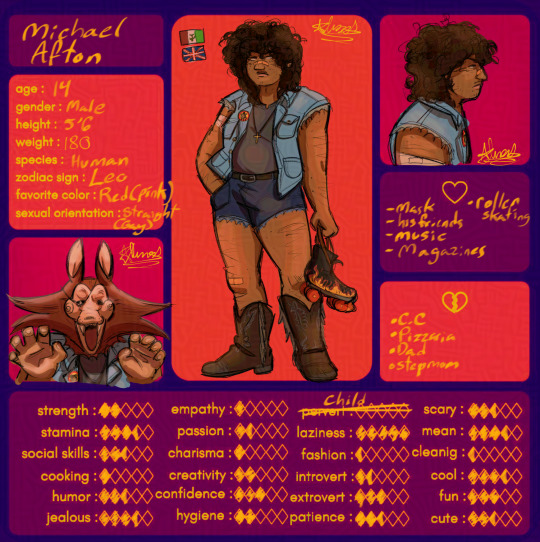
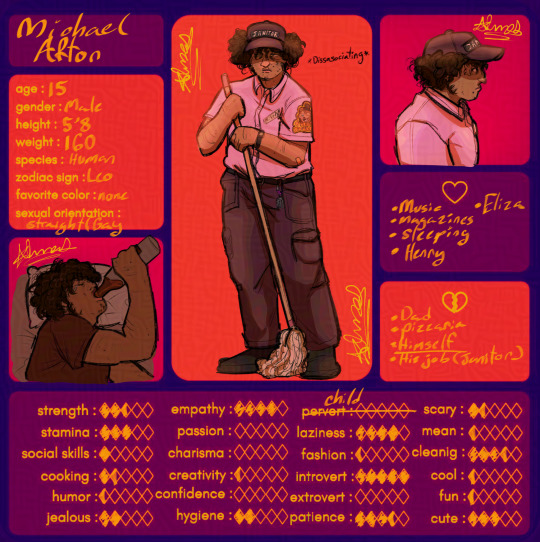
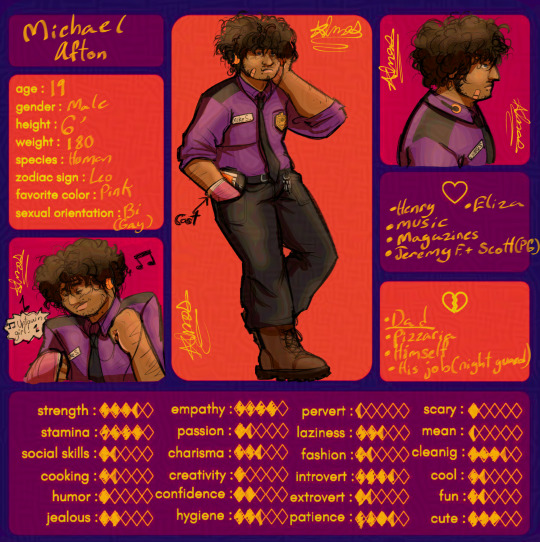
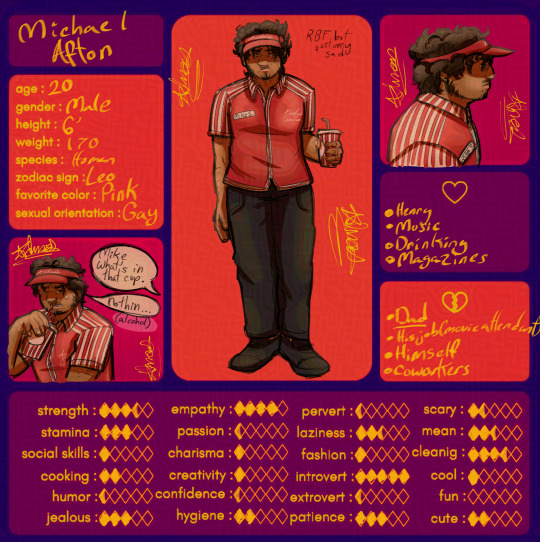

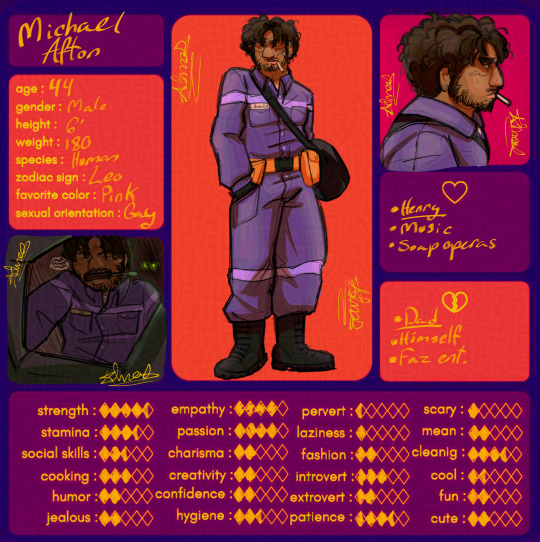
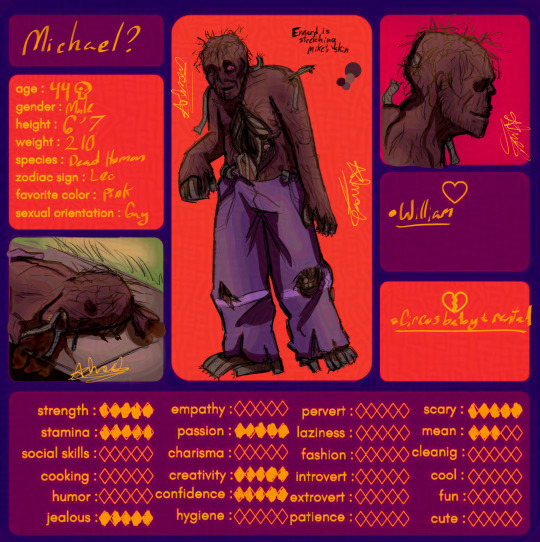
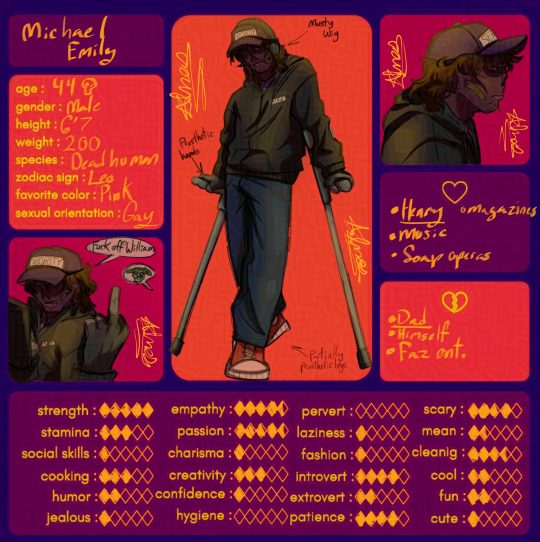
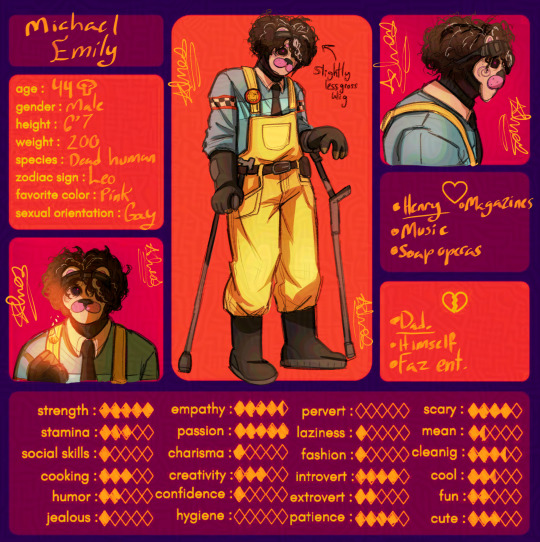
#fnaf#fnaf fanart#fnaf fandom#fnaf au#michael afton#mike afton#afton family#five nights at freddy's#five nights at freddys#fivenightsatfreddysfanart#fnaf redesign#redesign#theres gotta be more tags#just realized i forgot the gore tags#cw: gore#blood and gore#decomposition#zombie#cw blood#tw blood#tw g0r3#cw g0re#tw g0re#tw bl0od#cw bl00d#cw bl0od
191 notes
·
View notes
Note
Ooh!!!! Has Songpaw always had his ghost sight, or did he just get it after his first exposure to the oil?
Songpaw has always had what I would describe as "ghost sense", where he could feel presences, and maybe hear whispered words, but he couldn't see any spirits until he touched the black water. Dancepaw also has a ghost sense, they both inherited it from Eklutna, who used this sense to lead her to the black water, and later to Loudclan.


Eklutna is the best girl in my heart. I enjoy changing her ghost based on whose perspective we're seeing her from. Silt hallucinates her as this menacing, leering figure because Eklutna is THE villian of their story. The version of her watching her kits play is a more true version, that's what someone would see if they visited her in the blackwater pool. Meanwhile when we see her through Songkit's eyes she's faded and hard to understand because he's actively trying to block her out. He's refusing to let her appear fully to him, which is causing her to be more and more upset and incoherent.

You are not insane, they have little crushes on each other (moreso on Juneaucliff's part) and I think they are very cute together!

It is 100% okay to be an Owlstar lover! It is okay to be an anyone lover! I love all of them, no matter how bad of people they are so you are never alone no matter what character you love. My asks are a (nearly) judgement free zone.

He is! Sorry I didn't get to your ask earlier, I get a lot of asks, and I can't answer all of them, so while I LOVE and appreciate comments like this I tend to prioritize questions that I think would provide new information to the majority of people or line up with an upcoming plot point. I promise I am not ignoring anyone's ask for a "bad" reason, if someone or something was bugging me I would reach out to the person and let them know. Truly I am not telling anyone to stop submitting asks, they make me so happy, even if I don't answer them I see all of them and they are so kind. And if you have a burning question or comment that you feel has been missed please feel free to resubmit it, I do not mind repeats! /not mad
WARNING: Depiction of Decomposition/Decaying Body Below:

Yes! Because only the Leader and Lead Healer can truly commune with spirits, skulls are exposed after decomposition so that loved ones can speak and connect to the deceased. This doesn't happen until several moons to a year after the burial (depending on what season the cat died in), however, as the flesh must be allowed to decay. It goes something like this:

#loudclanasks#clangen#clan generator#cw death#cw dead cat#cw skull#cw skeleton#cw dead body#cw decay#cw decomposition
342 notes
·
View notes
Text
Hey @deerspherestudios!!! I finally finished the drawing!!!!! It only took 20 hours... but I hope you like it!!
This is based on Day 1, ending 1 of Mushroom Oasis, so spoilers if you don't know about it.
I'll add tags, but TW for death, bone, decomposition, decay (both human and animal), blood if you squint, body horror (???). Also, this will break your heart, so sorry, but the art gods demand tears today.
TWs UNDER CUT. YOU HAVE BEEN WARNED.

Some tid bits about this project in no particularly order:
- I started this cause I thought about what it would look like if Mychael had found MC a little bit sooner (than the few weeks that it took for the body to decompose). Plus, I wanted to brush up on my anatomy skills.
- The trees were based on the image of in deerspherestudios's answer to an ask about Mychael's vision, specifically the 'bottom eyes closed' one.
- The cat is an orange tabby cause I thought it goes nice with canon green collar. The MC is based on deerspherestudios actual MC ref sheet. Mychael is deerspherestudios whole-heartedly, but I did use the outdoor outfit we see him in in the 2nd day.
- I would image that MC's and Mychael's bags are just off the page, but I just forgot to add them.
- The tree 2nd from the right was not supposed to be there. Or at least I don't think it was. I don't know how that tree got there, I swear. 😅
- My 1st hour, which ended up being a failed attempt, was based on my sleeping sibling. Then, when they woke up and took a look at my work, they mentioned that the hand was as big as the entire chest somehow. That's when I said screw it, tried to find some reference images, and ended up spending the next 1 and a half hours on a 3-D model website trying to force the pre-made models to bend to my will. After that, it went pretty smoothly. *cries in hating perspective*
- I used BiC Mark it permanent markers, an ultra fine point red Sharpie, a Sakura Pigma Micron 005 pen, some Prismacolor Premier colored pencils for details, and a random school issued yellow pencil and pink eraser to make this.
- You can't really see it, but the flowers that Mychael is holding are forget-me-nots, as a reference to the field he would have taken MC to on the 2nd day. They are also in the rough shape of a broken heart. 💔
- On that note, the mushrooms coming out of MC's eye are also shaped like a heart.
- And yes, our soft boi is crying... 😢
#tw bones#tw blood#tw decay#tw decomposition#cw blood#cw body horror#cw: gore#cw death#tw death#tw dead body#tw dead animal#cw bl00d#cw blo0d#cw bl0od#cw decay#cw bones#cw dead animal#cw dead body#Cw decomposition#tw body horror#Mushroom oasis spoilers
212 notes
·
View notes
Text

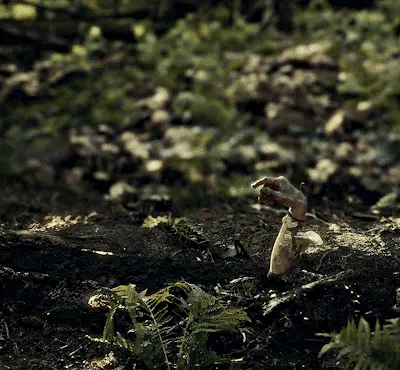
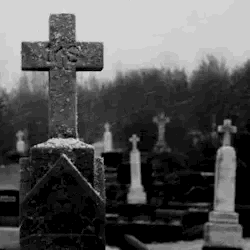


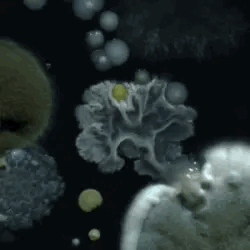

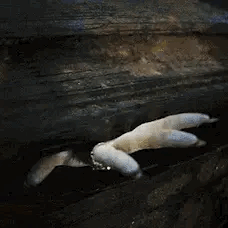
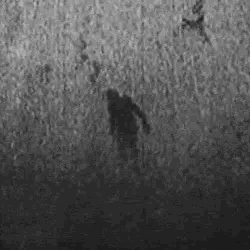

deadboy stimboard
ᯓ★ x x x , x x x , x x x
#cw animal death#decomposition#mold#mushroom#deadkin#deadboy#graveyard#ghostkin#stim#gif#stimboard#zombiekin#otherkin#necrokin#undeadkin#corpsekin#dead kin#pride#horror#kin#mecore
212 notes
·
View notes
Text
I love how Warren, Gordon AND Clive are character foils of one another. Interestingly, all three of them is assigned the colour gold. The colour implies relevance… which contrasts pretty well how they are viewed or treated by the other characters.
Warren is the “golden egg”.

He is the most important asset Overhead ever obtained and YET— despite all that, he is not treated like a person... he barely classifies as human by the people working at Overhead. In most instances, people talk for him, over him, and as if he’s not even in the room... and no one (except Gordon) seem to find that bothersome. At the start of the podcast he is set to follow a trail of breadcrumbs to return to the Red Valley Research Facility, which led him to discover that everything he thought he knew (his wife, his co-workers, his job, EVERYTHING) was fake. Overnight, his life was ruined and everyone was treating this event as if they managed to pull off a surprise birthday party for him (there was even cake! Oh, how lucky!). He later drives a scalpel through his own hand and people are worried for maybe a minute about him before they decide to use the self inflicted injury as a fantastic opportunity to test the pod’s potential benefits for medical urgencies. Warren is dehumanised and reduced to nothing at every turn, even before taking part to the project.
Warren is seen as nothing more than just a "fun" science project. Comparing him to a lab rat would be too kind, because that would imply that the people carrying out the experiments care about his wellbeing and are tracking his health (mental and physical) and ensuring his safety at each and every step of the way. Instead, he is simply viewed as nothing more than a test tube, a petri dish, a limited stock of valuable cells to routinely freeze over and thaw.
Gordon has a car that he lovingly calls the “golden bullet”.

He is always shoved in the background, belittled and treated poorly by his colleagues. He receives the most hostile comments from the people around him... quite routinely, too. When he worked at Overhead, he was considered as nothing but a corporate drone. Clive calls him "stillwater" to demonstrate how inconsequential and invisible he was to the company. Later, when he becomes the archivist at Red Valley, he is described as a man-child and treated like he has zero brain functions (he even gets called Igor, in reference to the character of the Frankenstein movie), he is made fun of constantly. No one expects anything of him... and Gordon internalised this, too. No one sees his importance, and as a result Gordon doesn't either. In reality he IS the one at the heart of the story: he was researching the seed vault way before anyone else, he is the one that records everything and subsequently provids the material that sacks Bryony, he is the one that explores the secret tunnel to aid Aubrey's plan and he is Warren's lifeline and only safe space while he continues to go in and out of hypersleep. He is the ONE person that helps Warren realise he doesn't deserve the harsh treatment he had to endure.
How fitting that Gordon, a character that struggles to find their purpose and their usefulness, is not even directly tied to the motif himself... his car is. And how interesting that the car is only lovingly referred to as golden, when in reality it is just coppery in colour.
Clive is the "golden boy".

He is at the front of the Kontinue project, and yet, no one really takes him seriously. He hires assistants for the project putting more importance on their appearance, rather than their qualifications. He dresses up in expensive clothes and suits to show how important he is to the company, only for the actual relevant people to not care what he thinks. During the meeting with Malcolm and Hester he was talked over, ordered around, treated more like a waiter than the important R&D person he is supposed to be... and I can't tell if he actually doesn't see this, or if he is refusing to face this reality. Bryony was fired because she was too smart for her own good and too dangerous, Clive was kept on the Kontinue project because he is being promised status and relevance, if he keeps doing what he is being told. He routinely threatens people, and still he never commits to the extremely graphic (and creative) threats he throws around: he is not the one that used the gun that one time, it was Bryony. After he is shot in the knee, his “get well soon” card is bland, generic and unsympathetic. No affection or warmth was being conveyed from his co-workers, despite the fact that he has been referred to as “the man of the hour” on multiple occasions before. And most importantly… he is recovering (seemingly) all on his lonesome. Just a Blue Sky to keep him company, while eating sad ready-meals and microwave lasagna. Where are his beloved wife and kid?
Clive is all appearance and no substance, all bark and no bite.
These characters seem to not be quite enough to classify as gold, they may be pyrite, or fool's gold instead:
Warren is the pyrite from which a lot of gold can be extracted. However, once all the gold is gone, he is going to be tossed aside, as his value is limited to and tied solely to its gold contents.
Gordon is the pyrite that was found by people who only see value in gold. No matter what, the people at Overhead will never appreciate the properties and qualities and uses of pyrite when they are so hellbent in digging and mining for gold.
Clive is the pyrite that is trying so hard to pass as real gold and wants to be treated as just as worthy. He is able to fool people for a bit, but pyrite might shine as brightly as gold and share some qualities and properties... but he'll never be the real deal... and some people might have started to notice.
#i'll start referring to them as the fools gold trio i think#anyways i am putting these three pyrites in the microwave to analyse their thermal decomposition as we speak#red valley#red valley podcast#red valley spoilers#warren godby#gordon porlock#cw clive schill#i am still not giving up on using clive like a content warning tag as a joke#is he going through a divorce right now? i wanna know. mostly because this would make his joke about being warrens new wife so much funnier
67 notes
·
View notes
Text
Revealing my magnum opus: Holy Ghost AU (name… under construction)
BLURB CW: Mentions of gore/decomposition, and canon-typical violence
ART CW: Suggestive Themes, Robot Blood(?)
αChurch doesn’t get erased, not completely. While he was projecting his consciousness into Washington’s neural implants when the emp hit, his core is still buried in Blood Gulch. While Temple is starting up his freelancer hunt, he finds information about The Alpha’s human host… and where it’s buried. He digs up αChurch, an ai that’s been stuck in an abandoned base for years at this point, alone and deteriorating, but still more whole than the fragments ever were, trapped in an unmoving decomposed corpse. He digs him up, has his teammates make him an ai body, and team up with a mutual hatred for the freelancers and the project, especially Washington in αChurch’s case. Please please please ask me about this AU! I’d be so happy to elaborate!
@rvbrarepairweekdos


My Commissions Are Open You Should Check Them Out (u really cant beat $5 - $10 halfbodies)
#well’s art#digital art#art#rvb rarepair week dos#rvb rarepair week dos point o#rvb rarepair week 2#rvb rarepair week 2.0#rvb rarepair week 2024#rvb rarepair#rvb rarepair week#rvb#red vs blue#rarepair#rare pair#rarepair week#mark temple#leonard church#alpha church#what the fuck is their ship name#day 29#and they were roommates#…and they were roommates#holy ghost au#rvb holy ghost au#cw suggestive#cw suggestive themes#cw blood#its robot blood but still#cw decomposition mention
73 notes
·
View notes
Note
Any goat headcanons?
dont EEEEEVEN with meeee rn i love the Goat. Play as them on my friend’s Switch.
Anyways
GROSS ALERT
The Goat was dead. It was really, really, really dead. When the Lamb got it, its guts n ribs n allat were visible. The Lamb swears on Their own grave that it was in full on decomp, at least a little. But the Goat was still… walking. If it didn’t have to use both hands to keep itself together, it probably would’ve been fighting, too. The only thing keeping that goat together was its Crown.
#tw decomposition#cw death#cw gore#cw blood#cult of the lamb#cotl#cotl lamb#cw blood mention#cotl goat
25 notes
·
View notes
Text
ALRIGHTY lets go!
The Corpse; A short guide.
So. You want to write or depict cadavers in your work? Well, look no further! Hopefully, this will be helpful to you.
A corpse is a dead person, also known as a cadaver - it's something that we all become at some point. Corpses can vary a lot, depending on the person and the context of their deaths. Let's start with a general corpse description and what usually happens after death.
Following the cease of circulation when the heart stops, some muscle and tissue will remain responsive to stimuli for approximately 3-4 minutes. In this short window of time, resuscitation is still possible, however anoxia and irreversible ischemia is a risk.
That doesn’t feature in the supravital period, which extends from 100-120 minutes after the heart has stopped. During this period, muscle and tissue will respond to mechanical and electrical stimulation.
In other words; As soon as your heart stops beating, your body is now on a clock of decomposition (unless of corpse, other preventative measures are taken). Decomposition can vary in appearance and signs depending on various factors pre-and-post mortem, but generally it's divided into separate stages; Fresh. Bloat. Active decay. Advanced decay. Skeletonised.
The natural body;
By this I mean a body that's died and left to own devices, not autopsied or embalmed. That means this body goes through the post-mortem stages of decomposition, be it in a casket or shroud placed directly in the ground.
Fresh cadavers are people who've died within 24-48 hours, where rigor mortis sets in and dissipates. Generally, fresh cadavers start to change colour within 2-4 hours post-mortem. Cadavers can have all sorts of colors of decay, be it due to pre-existing conditions such as liver failure (which would cause a build-up of bilirubin and give the skin and eyes a very yellow tone), livor mortis, blood or mold.
A fresh corpse looks slack at first. Eyes are open, more often than not unevenly so with lazy-eyes, beginning to cloud-over, and lines of dust (also known as kevorkian sign) will adhere onto the eyeball as it deflates. Lips pull back in most cases or they shrink and become very thin. Jaw is slack. The scent of death varies from person to person, but generally the more body fat you have, the stronger the scent.
From the time a cadaver cools to ambient temperature and until it becomes a skeleton, soft tissue decomposes by aerobic and anaerobic bacterial action, known as Autolysis, the disruptions and disintegration of cell walls, varies depending on the surrounding environmental conditions but generally begins in bodies buried graves at 48-72 hours after death. Intestinal membrane disruption releases aerobic and anaerobic bacteria. The process of autolysis gradually blends into the stage of decomposition known as putrefaction, which is characterized by decomposition occurring in an anaerobic environment. It’s faster in the presence of oxygen, and therefore bodies on the surface decompose faster than those buried, while bodies submerged in water decompose slower than buried.
Temperature plays a role, where the higher the temperature is the quicker it’ll set in and resolve. Meanwhile the colder it is, the slower it’ll set in and the longer it’ll last.
Things like death by electrocution effects it by hastening the onset and short duration, or poisoning which can both hasten or delay it.
Algor mortis, or body temperature, refers to The cooling of the body until it reaches ambient temperature.
It can vary depending on external and internal factors such as ambient/room temperature, the temperature of the deceased pre-mortem (like, hypo/hyperthermia), clothes, body mass and body position.
Using a formula that says normal temperature x rectal temperature divided by 1.5hrs = approximate time since death.
1.5 is because it’s said that the body cools by 1.5 degrees fahrenheit every hour. However, when the body’s temperature is around 7 degrees F from ambient temperature, the cooling slows significantly and can take several hours to reach room temperature.
Bodies will get red-purpley patches on them depending on their positions post-mortem. This is known as Livor Mortis.
Livor mortis is the gravitational pooling of blood post mortem in the body - both in capillaries, venules and in organs. Onset is variable, but usually starts to show around 2 hours, but can occur as early as 15 minutes post mortem. The color will change from red to purple as oxygen dissociates from the red blood cells, turning it into deoxyhemoglobin. However, certain types of poisoning (such as carbon monoxide) will keep the color a consistent cherry red.Bodies that are very anaemic may not experience this.
Lividity, as in the blood flow post mortem, is not fixed. If applied pressure, the area will turn white as blood is squeezed into surrounding areas - this can be done until approx 4-6 hours post mortem, as the cooling of the body will have solidified the fat making the blood unable to be squeezed into other areas. The quantitative measurements of livor mortis are only useful for 30-40 hours post mortem and before the changes of putrefaction have begun. The rate of occurrence, intensity of coloration, distribution, and possible redistribution of lividity are so variable and difficult to standardize.
The estimate, of the postmortem interval (PMI) during this stage of decomposition is more difficult and less precise because of the multiple factors involved which consist not only of intrinsic factors (ie, the physical and diseased state of the body) but also extrinsic factors (ie, the context in which the body decomposes). A body will decompose more rapidly if sepsis or a fever was present before death, in edematous tissues, in obese individuals, while decomposition will be slower in thin individuals.
What is rigor mortis?
Rigor Mortis refers to the contraction of muscles that sets in around 2-6 hours after death, lasts around 24-84 hours, then gradually loosens. This happens because ATP is still being produced after death, but when there’s no longer any energy left to keep muscles fluid, it contracts.
Several outside and inside factors contribute to the speed of which rigor mortis develops; things such as violent exercise or high fever during the agonal stage will cause a rapid onset and shorter duration.
The amount of skeletal muscle dictates the duration - an infant will have an early onset and early disappearance, while a strong and robust person will have a slower onset and a longer duration.
Bloat refers to the stage of which bacteria will have eaten through broken down cell-walls and tissue, since the proteins that kept them in place from doing this is no longer working, the bacterial in your body will essentially eat you from the inside. Because of this, they produce gasses, which will cause the torso, especially the abdomen, the genitals, throat, tongue and eyes to bulge and 'bloat' because of the gasses expanding the flesh until it pops. The flesh will take on a bruised and sickly-looking appearance as your insides slowly turn liquid. When you pop, you're officially in the active-decay zone. Congrats!
Your insides are liquid, and honestly look like thick chunky chicken soup (you're welcome for that visage), and if there wasn't any insect before (which I highly doubt) there surely will be now. Maggots will feast on the fat, burrowing beneath the skin, but beetles will come and feed on you, spiders, larvae, moths - it's a smørgasbord for insects. Your body will actively rot, or be eaten, or both, as you speed through active and advanced decay.
Finally, your skeletonised remains is the result. Your skin may hang on in places, leathery and dry, and your hair might still be there. But you're now a spooky scary skeleton.
Autopsies & Embalmed bodies;
In many places in the world, if someone dies unexpectedly, from crime, disease, or if the next-of-kin desires, an autopsy is done to figure out what went wrong, or to file a death certificate. Bodies who are autopsied will have their organs removed and often times preserved in a formaldehyde mixture for an (x) amount of time post-autopsy in case of further study, police work or evidence protocol.
On that note, when someone dies, usually the first people on the scene alongside the police are the MLI - The MLI are the first responses from the medical offices, they’re the ones arriving at the scene of an untimely or unusual death and document, investigate and examine everything. They're what they'd call forensics in TV.
What's typically in a morgue? Each table, autopsy table really, is instrumented with a high-powered faucet, kind of what you’d see in industrial kitchens. The ones resembling a hose. Metal slats are built into the tables to allow fluids to drip down. Beneath the tables are narrow basins that catch the drippings, leading directly to a biohazard waste container, and it's pluggable, which is handy when working with homicides or suicides by gun, that way bullets doesn’t get into the container.
The main goal of an Autopsy is essentially;
Finding the cause of death, and the manner of death.
The cause of death is the “what physically caused this person's body to die” - the chain of lethal events that is purely physiological in nature.
The manner of death is the classification of the circumstance. Every death is categorised as either;
Accident, Homicide, Suicide, Natural causes, Theraupeutic complication or Undetermined.
The distinction between the two are important for lots of reasons, depending on the person and their life. Be it insurance companies policy, or someone's landlady.
Every autopsy begins roughly the same. An extremely thorough external examination.
Anything from clothing, jewellery, hair, scars to whatever metal you have pierced through flappy parts of flesh, or miscellaneous pocket items. Any scar, birthmark, tattoo - You name it, is noted down. Everything is important, a forgotten freckle or birthmark, anything really, can make or break any death certificate or an investigation.
Then different samples are taken, such as samples of the vitreous fluid (one of the fluids in the eyeball), using a 1 ml syringe with a 20 gauge needle (pink needles). The needle is inserted into the side of the eyeball until the tip is visible through the pupil (usually, this takes approx. 2 seconds). Normally this is done for both eyes, but that’s not always possible. Yes, sometimes eyes pop out.
Next is a blood sample, typically taken from the large femoral vein or one behind the collarbones.
The first incision is the Y-incision. From each collarbone, there's an incision made towards the sternum, until it meets in the middle. From there it's a straight line down ending by the pelvis. Now the body can be carefully opened up and have connective tissue on the ribs sliced off and soft flesh on the stomach removed.
Now the torso is visually divided into the 5 cavities that make it up;
The abdominal cavity, which is also the largest. It holds the intestines. Behind it is the cavity that holds the kidneys. There’s the chest which has the lungs, both of them have their own cavity filled with fluids. And finally, the heart, also in the chest. When conducting an autopsy, it's important to both count all the organs, and also remember to separate based on cavities. This makes it easier when it comes to contamination of inside or outside sources, since not every organ could be affected.
Where someone starts with the organs depends on different things such as damage. Typically someone would start with membranes that protect organs. Observing the tissue and membranes help the examiner with the COD, since damaged tissue would be red, infections would be yellow/green, and large pools of blood could be an indicative of a burst aorta or spleen. Yes, those organs are very fragile and will burst very easily, and is actually often times the COD when someone dies from a crash or fall.
The tools used are scalpels, clampers, pincers - which are medical in nature, but a lot of tools can also just be something brought from a hardware store. For example, large pruning scissors you'd use in a garden works excellent enough as a rib-cutter. Typically, when more advanced tools is used, like a bone saw, the examiner is not the one using the tool, but an assisting technician.
From there, it's snapping off the breastplate, and opening different membranes. If there's a large pool of blood coming out of say, the abdominal membrane, then it's because the person's heart was still beating after the trauma occurred. This distinction is useful for the examiner, for example, if the body's neck is broken alongside the large amount of blood; that'd mean the person likely died from blood loss to the surrounding tissue (ischemia) and not the broken neck.
When someone has been opened and examined, it's time to remove the organs. Typically the examiner starts with the lungs, which are pink and spongy less the person was a smoker, then they're crispy like a chicken nugget, and heart, and places them where they feel is best. Organs are slippery though, so it might be trial and error on where it's easiest to put them. Like by the body's feet.
The knives used here could be medical, but it could, again, also just be regular sharp kitchen knives.
Once the heart and lungs are gone, it's time for the intestines. To start, the fatty tissue that adheres it to the rectum is trimmed away, it's just about pulling since it's one long organ. When everything but the start of the duodenum is out, that's cut away, thus severing the intestines from the stomach. The intestines are placed in a bowl to weigh. The liver is attached to the intestines and the stomach, but it’s easy to remove. Opposite to the liver is the spleen.
Next the stomach, pancreas, duodenum and oesophagus can be pulled out in one line and placed with the other organs. Now there's plenty of room to remove the kidneys and adrenal glands, which don't look all that grand unless they're infected.
The only things left to remove from the abdominal cavity are the bladder, sex-organs and the rectum. To do this, the examiner will need to reach down deep into the pelvis and cut around the anus. It makes a terrible suck-like sound.
Removing the bladder is always a gamble. If it’s full, it’ll be like handing a soft water balloon.
The sexual organs are removed if it's a uterus. If it's testicles, the body's scrotum will be inverted and if the testicles are undamaged, they'll likely just be pushed back in place.
Next is the aorta and vena carta, the largest artery and vein in the body respectively.
They're adhered to the spine, and will be sliced off to be placed alongside other organs.
Here the examiner will also be able to see if any parts of the spinal collum, medulla spinalis, has been broken. You can often feel and hear it when a body has a lot of broken bones, but you still need to confirm it. If you want to confirm if someone's hip is broken, you do it by slicing away the flank muscles.
Next up is the face. For starters, a U-incision is made from ear-to-ear, peeling away as much of the scalp as possible and let it hang down the face. Here is where the cranium will be opened using a bone-saw, making a halo-like cut. It's important not to slice too deep so as to not damage anything. Then it's just about popping off the top of the cranium. The outside of the brain is white because of the arachnoid and pia maters. Delicate blood vessels line the tissues, and if someone dies from a headwound, you'd see blooms of red on the sub-arachnoid mater. Outside the skull, the brain has the consistency of jello. If someone fell from a building, and their head hit something, it'd likely make the brain pooling and bloody.
When the cerebrum, cerebellum and medulla oblongata have all been removed, all that's left is the neck.
The trachea, thyroid and upper oesophagus is in a big pile, being pulled from the base of the tongue. Here, the examiner can poke a couple fingers down by the back of the jawbone, feeling for jutting bones or listening for crunches. If the body's head had been shaken in a specific way, a hit to the upper neck bones could sever the skull and neck, injuring the medulla oblongata and causing instant death. It’s similar to decapitation but the head stays on.
With the organs weighted, notes filled out, the medical examiner can now conduct and finalise their investigation for the COD and MOD filling out the death certificate.
The embalmed body:
Embalming is the process of slowing down decomposition of a cadaver, be it because of travel, funeral arrangements or for display. Most American funeral homes will just do embalming, because it is law in the US for funeral homes to offer, and be trained, in embalming procedures. This hurts funeral homes owned by Jewish people and Muslim people, for example, as their culture of deathcare doesn't allow for embalming.
Very advanced decomposed or damaged cadavers can still be embalmed, however, you'd need someone specifically trained in reconstructive embalming and deathcare, as it sometimes entails replacing body parts. Since everything will decay, some bodies on display have teams of scientists and reconstructive specialists to replace and bathe the body in whatever formular they use periodically.
Also, quick disclaimer, embalmment is illegal here because of chemicals, so all my knowledge stems from research only. The part of dressing cadavers is based on experience of myself and people I know.
The most common reason for embalming is for a funeral viewing. Families/next of kin can request a specific make-up look, hair-do, outfit, and will sometimes participate in this process. In some cultures it is the family that washes and prepares the body entirely, which used to be the norm until funeral homes made death-care a business and the idea of housing the dead, and death in general, became more and more taboo.
Different chemicals are used depending on how the person died, as well as their complexion, so it's sort of personalised. The embalmer will be using a mixture of chemicals and dye as the embalmment fluid to help with the body's complexion.
The embalmment fluid is made up of the aforementioned dye, a mixture of formaldehyde, glutaraldehyde, methanol, and other solvents, and humectant (which means, it helps restore some of the fluid lost during the dying process)
The strength of the fluid depends on how much formaldehyde is present. The other chemicals present are known as co-inject chemicals, which act as the vehicles for the humectant, dye and formaldehyde to move through the body. How long an embalmment process last depends on the state of the body, COD, ect.
Now that the cadaver is on a steel table, the mortician will begin washing and disinfecting it. While doing so, the person will be massaging the different joints and body-parts to break up any rigor-mortis that may be present.
Clean and massaged, it's time to open up an incision in the neck to gain access to the vein and artery present. This is done with a scalpel right along he collarbone, where then the mortician will lift up the carotid artery with a large lock-pick looking tool called an aneurism hook.
Then, using a large tube, the arterial tube, will be inserted into the artery. Once it's in place, a pair of tool-scissors with a flat horizontal tip, called a haemostat, will be clamping down on the artery with the tube-nozzle inside to keep it in place.
The machine that holds the tank full of embalmment fluid is connected to the arterial tube, which will begin pushing the mix throughout the body, into the arteries, the heart, all into the veins and it's going to push out the bacteria-rich blood. As mentioned earlier, the bacteria that eats you up inside can do so because there's no longer proteins there to stop them. What this mixture of chemicals does is fix those proteins, because formaldehyde coagulated protein, and thus halts, pauses or slows down, the bacterial decomposition on the inside.
And, while the embalmment fluid is being run into the cadaver, it's important for the mortician to massage the body so that the mixture can get into as many capillaries as possible, massaging and pushing towards the heart. Any part of the body that's accessible should be stimulated.
Meanwhile, the mortician will use what's called a "trocar" which is a tool that looks kind of a like a very very long screwdriver. It's very sharp, and hollow, and works by puncturing the abdominal cavity towards the right ear, puncturing the heart, and moved back and forth in sideways slow motions to create channels through the organs. The trocar is hollow, because it works as a suction-tool. When the mortician is working and pushing it through the organs in the torso, they're also sucking up the different fluids that's accumulated, to make way for the embalmment fluid that's going to replace it. This is done both for the upper and lower parts of the torso.
When it comes to the face, with the features being "set", which involves a reconstruction of the face using make-up or injections. It's also when you close the eyes and mouth. Some funeral homes use onions to put into the eyesockets to keep them shaped. Others use eye-caps, which also helps keeping the lids shut.
Whether the mortician begins with the face or the body is generally up to preference.
There's several different ways to close the mouth, be it needle injection in the gums, or using a long curved needle to sew it shut (muscular suture) where it starts through the nostril, through the septum, down below the lip, opposite side, and back up to the nostril to be tied off.
Some like to use a simple rolled up towel beneath the chin to keep the mouth shut.
Since the face will often be sunken, or heavily decomposed, hypodermic injections of a perseverative fluid to reconstruct features.
When the face has been reconstructed, and body embalmed, it's time for the clothes and the make-up/hair.
For the clothes, it's put up by cutting the back open, so it's kind of like a backwards jacket, and then able to easier be put on the deceased.
The same is done for pants, but there's a tool, a sort of bench, and a shoe-horn-esque thing, that helps with the legs of the deceased in case they're wearing pants. The cut open parts are then arranged to be hidden beneath the body. The hair is done so the front is styled, more often than not the back is tied into a knot or otherwise concealed. The make-up is a mixture of cosmetic products and mortuary make-up, and will more often than not be sprayed on (like, the foundation).
The body is now embalmed and ready for viewing!
Burned bodies;
Burned bodies are cadavers that've died by fire, or been boiled. The main differences here, is the way that bodies will contract because of the heat. The skin will split open to let vapors out, bubbling and sizzling from the fat and tissues being cooked. The organs would turn solid. The high heat makes bones brittle, and the skin extremely dry and black.
It takes immense heat to cremate or burn a body to ash, hence why crematories have specialised machines. The body would be in a fetal-position from the muscles seizing. The throat and inside of the mouth would be burned from the hot air. During cremations, the organs liquify, and the brain with typically leak out of the ears and nose.
Fun fact. 5-degree burns is a thing, that's what you call blackened or bodies that turned to ash.
Water-logged bodies;
Bodies that're lost at sea and later wash up can vary a lot, and will often times look different as opposed to your natural corpse. Not just because water is more often than not cold and will act as a liquid fridge, but because of scavenging animals, and that as soon as the body is out of the water, putrefaction or active decay, will occur much faster. Another key differential is the presence of 'adipocere' which a wax-like substance that forms due to the anaerobic nature of water. Clothing on a body will alter the buoyancy and the progression of decomposition, it can also be misleading.
One of the most well-known external change that immersion in liquid has on the body is wrinkling of the skin, particularly involving the hands and feet, kinda like when you've been in the shower too long. But much more severe. The top layer of the skin looks like a wrinkled glove. Another cutaneous change and is caused by rigor of the erector pilli muscles within the skin is called Cutis anserina. Both of these changes, wrinkling and cutis anserina, will occur as a postmortem change and do not require the individual to be alive upon entering the water.
Livor mortis and discoloration of the tissue happens in water-logged cadavers like it does for regular cadavers, just at a slower rate, especially in colder waters.
During an autopsy, people who drowned will have fluids built up in their pleural cavities. Regardless of if they died or not in the water, if a body is later on placed in the water, fluid might enter through the mouth, as well as dirt and other debris. The rate of decomposition affects this, as bodies that're more decomposed have been found to be more predated upon, and have larger build up of fluids in their chest cavities. Rigor mortis and livor mortis are typically present in bodies recovered from the water though the onset and waning of these classic postmortem changes may be altered by water temperature, current, changing of body position due to movement, and level of activity prior to death. Pink discoloration of the teeth and gums, an observation once thought to be a sign of drowning, is likely due to lividity in these tissues occurring while the body is what is known as the "drowning position" where the head and limbs are facing downwards while the back is facing upwards, likely breeching the surface of the water.
The other main difference to bodies found in water, is the currents. The currents can alter the temperature, but also move the deceased and drag them across or into several obstacles, creating injuries that can mislead the COD.
And that's pretty much it! I hope it made sense, and that it'll be useful. Feel free to ask clarifying questions!
#cw death#tw death#graphic#cw autopsy#cw death mention#writing tips#sources: the makings of a medical examiner by dr. judy melinek and tj mitchell#forensics by val mcdrrmid#smoke gets in your eyes by caitlyin doughty#decomposition changes in water by james l caruso#human body decomposition by hayman and oxenhan
19 notes
·
View notes
Text
Fun fact! Human decay has a very specific smell that humans are hard-wired to recognize. If you smelled rotting human flesh, even if you’d never smelled it before, you’d recognize it instantly.
#FNaF adjacent#I mean we all know why I’m saying this#cw death#I feel like there’s something else I should put but idk what#cw decomposition#?#sure why not#michael afton#tagging his sorry ass#I actually can’t smell anything so this wouldn’t work on me#but I learned this recently#I think it’s very interesting#I love random information
17 notes
·
View notes
Text
tw: mention of death, decomposing, describing decomposition in detail, blood mention, insects etc
dear nonhuman being, concept, plant, place, or creature—
remind yourself that this life you’ve been forced into is special. I know it’s painful, but think of those beautiful things we get to experience because of it. The feeling of the biting cold creeping against your skin. The feeling of sun gently stroking your cheek. Being able to lay in the grass. The ability and joy of dancing and playing in the rain, getting your feet muddy and ruining your clothes. those sounds of human colonies, loud and bold— whether we enjoy them or not, they’re a fascinating and unique experience we can only have here and now. The feeling of blood leaving your fingertips and rushing to your face, the feeling of breathing, the feeling of cold steel, the crushing weight of towering cities, the beauty of Earth’s forests, the symphonies of human language. The ability to rot, so many of us wouldn’t have if we could be back home— is to beautiful to me. We have a chance to experience death, and for many of us non-mortals, that’s something unique. We can be eaten away at by maggots, be fuel for natural fungi, be hugged by soil…
humans can experience many things. Many of them we don’t like. But that doesn’t make them any less special. Whether or not you enjoy this mode of existence, it’s one we’re being subjected to, and it’s one that I want you to feel the gross, grimey, gentle, and loving aspects of. This is a unique chance infinite existences don’t have. Go out there and experience it, no matter where you are. Take note of the tiny things. Observe. Take care of yourself. <3
#alterhuman#otherkin#nonhuman#orbit-rambles#eldritchkin#tw cw death#tw cw decomposition#cw death#cw blood#cw insects
4 notes
·
View notes
Text

DAY 1: ROTTING
Bea is often tied with oranges... So of course. Moldy orange. The Old Painting vibes were very accidental but very welcome <3
#bone scribbles#Void goretober 2024#crisisgoretober2024#Mold cw#Rotting cw#Decomposition cw#voidvi#bea hart
6 notes
·
View notes
Text










Magnum Opus: Nigredo (part #2 of real-life alchemy series)
x x x x x x x x x
Please do NOT tag with HP tags or use for HP content. Thank you for honoring my consent!
#alchemy#decay#decomposition#fermentation#magnum opus#nigredo#putrefaction#rotting#sublimation#the great work#content: stimboard#cw: clusters#cw: food
3 notes
·
View notes
Text
Warning! Descriptions of decomposition!
I can't stop thinking, about chip jrwi being literally undead. this will be the last post about it today I swear.
Now that chip is undead. Does he like... rot? Are bugs just gonna start following him? Like what level of decomposition are we talking about. Are his insides just gonna become like goop? Is he gonna start losing (or having different pigmentation in his) hair or nails? Are his eyes gonna get that clouded dead look? Would he end up like the hollowed we saw in ep 103-105 ish? I don't think the arachnid pirates were described as "rotted." But would it be different for a human? Obviously he's not just gonna fall to pieces (hopefully) but I wonder what will change in his appearance over time. I have so many questions and I curious to see what the answers are...
#jrwi chip#jrwi spoilers#jrwi riptide spoilers#sorry this is gross#I just can't stop thinking about it#my brain is full of worms#jrwi 109 spoilers#jrwi 103 spoilers#1 am thoughts#this is also assuming he stays undead long enough for it to matter#cw decomposition#toffeesbabbles
19 notes
·
View notes
Text
Found my offical favorite piece of lost media
5 notes
·
View notes